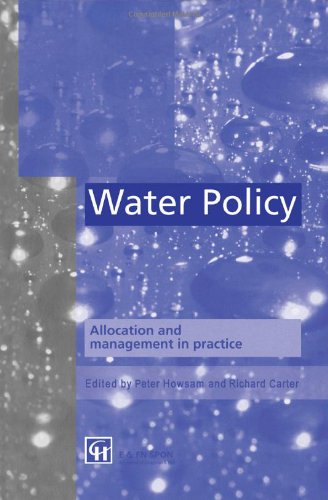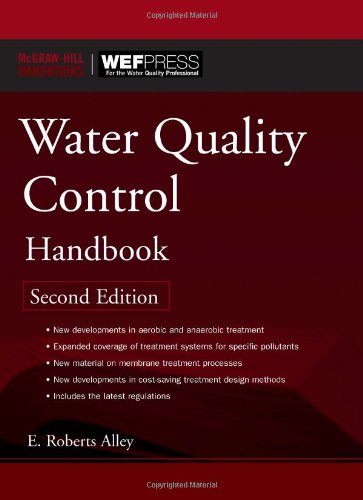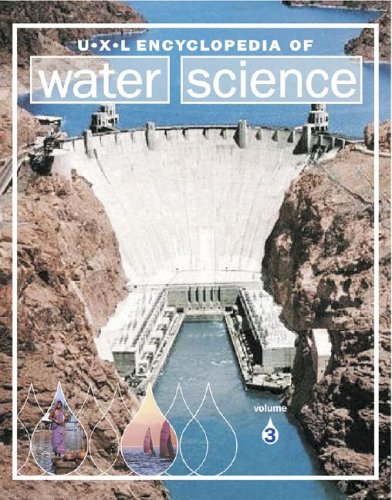P. Howsam, R.C. Carter9780419216506, 0-419-21650-2, 0-203-47674-3, 0-203-78498-7
Table of contents :
Water Policy: Allocation and Management in Practice……Page 3
Foreword……Page 9
Preface……Page 10
Acknowledgements……Page 15
Professor Ian Carruthers……Page 16
Contents……Page 5
Contents……Page 0
Section 1: Water Allocation……Page 17
1 Introduction……Page 18
2 Phases In Water Allocation And Management In A Dry Region: The Middle East……Page 21
3 International Context Of Domestic Water Policy: Water, Food And Trade……Page 23
4 Evolving International Economic And Institutional Contexts And Water Policy……Page 24
5 Conclusion……Page 25
6 References……Page 26
1 Introduction……Page 28
2.2 The Seasonal Effects……Page 30
3.3 Policy Formulation……Page 31
4.3 Water Economics……Page 32
5.2 Geopolitics……Page 33
6 Conclusion……Page 34
7 Bibliography……Page 35
1 Introduction……Page 36
3.1 Water Resources Management……Page 37
4 Importance Of Policy Development……Page 38
4.2 To Reduce Institutional Fragmentation……Page 39
4.4 To Provide An Avenue For The Outworking Of Political Objectives……Page 40
5.2 Water Demand Management……Page 41
5.3 Tariff Policy……Page 42
5.5 Sanitation Policy……Page 43
5.8 Water Law Review……Page 44
6 References……Page 45
1 Introduction……Page 46
2 Intra-basin Relations And The Concept Of Interdependence……Page 47
2.1 Regime Formation For Management And Allocation Of Euphrates-tigris……Page 48
2.2 Supplementary Proposals Of Turkey For Cooperation……Page 50
3 Institutional Bargaining And Leadership In The Euphrates-tigris……Page 51
5 References……Page 52
1 Introduction……Page 54
2.2 Step 2: The Selection And Testing Of The Fundamental Objectives, Specification……Page 55
2.4 Step 4: Ranking And Selection Of Projects……Page 58
2.5 Step 5: Measuring The Water Sector Strategy Performance……Page 60
3 References……Page 61
1 Introduction……Page 62
3 The Farmer’s Perception……Page 63
3 Future Changes……Page 64
Section 2: Water Resources……Page 65
1 Introduction……Page 66
2.1 Introduction……Page 67
2.3 Conclusion……Page 68
3 Recent Changes In Global Precipitation……Page 69
4.1 Published Data……Page 70
4.2 Impact Studies……Page 71
5 Conclusions……Page 72
6 References……Page 73
1 Water Scarcity In A National Context……Page 74
2 Water And National Security……Page 76
5 Management Of National Water Scarcity……Page 77
6 Misconceptions On Solutions To Water Crisis……Page 78
8 References……Page 80
Summary……Page 81
1 Four Waters……Page 83
2 Rain Water……Page 84
3 Soil Moisture……Page 85
4.1 Water Table Levels……Page 86
4.2 Rationale In Government Taking Up Recharge Works……Page 87
4.5 Aquifer Management……Page 88
5 Surface Water……Page 89
8 Reference……Page 90
1 Introduction……Page 91
2 Current Spanish Legal And Institutional Framework For Water Management……Page 92
3 Water Planning In Spain: Catchment Plans And The Draft Spanish……Page 93
4 Main Issues On The Tagus-segura Water Transfer……Page 94
5 Future Transfers In Spanish Hydrological Planning?……Page 96
6 Demand Management In Spain……Page 97
8 References……Page 98
1 Introduction……Page 100
2.1 Groundwater……Page 102
3 Current Water Use……Page 103
5 Development Options……Page 105
6 Conclusions For Future Resource Management……Page 106
7 References……Page 107
Section 3: Environment & Water Quality……Page 108
1 The Water Context……Page 109
2.2 Groundwater Development……Page 110
3 Groundwater Degradation……Page 111
4 A Conceptual Framework……Page 112
6 Two Case Studies……Page 113
Strategic Options…….Page 114
6.2 The Gaza Strip……Page 115
9 Conclusions: Policy, Theory And Practice……Page 116
10 References……Page 117
1.1 Perturbations Of Hydrological Cycle……Page 118
1.2 Quality Deterioration Within Urban Limits……Page 119
1.3 Downstream Riparian Effects……Page 121
1.4 Consequences Of Uncontrolled Aquifer Exploitation……Page 122
2.1 Aquifer Pollution Control……Page 123
2.2 Resource Management Criteria……Page 124
3 References……Page 125
1 Introduction……Page 126
2 Fate Of Contaminants In The Oman Environment……Page 127
4 Wellfield Protection……Page 128
5 Areas Of Conflicts……Page 129
6 Discussion……Page 130
6 References……Page 131
1 Introduction……Page 132
2 Sewage Waste……Page 134
3 Agriculture Drainage……Page 135
4 Industrial Effluent……Page 136
5 Policy Recommendations……Page 138
6 Bibliography……Page 139
Abstract……Page 140
2 The Current State Of Agriculture And Environmental Protection……Page 141
3 The Karst Zone Management Plan……Page 143
4 Summary……Page 145
1 Introduction……Page 147
2.1 Identification Of Risk Factors……Page 149
2.4 Combination Of The Risk Assessment Techniques……Page 150
3.2 Catchment Risk Assessment……Page 151
4.1 Performance Of The Risk Assessment Technique……Page 152
4.3 Conducting Risk Assessment Surveys……Page 153
6 References……Page 154
Section 4: Water Supply Management……Page 156
1 Introduction……Page 157
2 Water Delivery Scheduling……Page 158
3 Demand-supply Considerations……Page 159
4 Concluding Observations……Page 162
5 References……Page 163
1 Introduction……Page 164
2 Demand Management……Page 165
3 Metering As Incentive For Saving Water……Page 166
4 Water Tariffs In Sweden……Page 167
5.1 Reasons For Not Metering Water Supplies……Page 168
6 Costs……Page 169
8 Experience……Page 170
9 Summary……Page 171
1 Community Water Supply And National Water Policy……Page 172
3 Programme Objectives Are Often Unclear……Page 173
5 Inadequate Objectives Result In Incomplete Methodologies……Page 174
6 Developing Effective And Transparent Strategies……Page 175
7 Conclusions……Page 177
8 References……Page 178
1.1 Macro-level Characteristics……Page 179
1.2 Scope Of Study……Page 180
2.1 Assumptions And Mechanisms Governing Irrigation Requirements……Page 181
3 Patterns Of Irrigation Supply And Demand……Page 182
3.1 Farmer Use Patterns……Page 183
4 Conclusion……Page 186
5 References……Page 187
1 Introduction And Background……Page 188
4 Establishment Of Water And Sewerage Systems……Page 189
5.3 Water Consumption……Page 190
5.5 Evolution Of Wastewater Treatment……Page 191
6.1 Water Supply And Sewerage Organisations……Page 193
8 Conclusions……Page 194
9 References……Page 195
1 Introduction……Page 196
2.1 Specific Demand—supply Match (dsm)……Page 197
2.5 Discharge Adjustment (da)……Page 199
2.7 Rotation Integrity (ri)……Page 200
3 Characterisation Of Two Irrigation Systems—case Studies From Swaziland……Page 201
5 References……Page 203
Section 5: Water Economics……Page 204
1 Introduction……Page 205
2.1 Valuation Methods……Page 206
2.2 Modelling The Allocation Of Water……Page 207
3.1 Usa……Page 208
3.3 United Kingdom……Page 209
4 The Value Of Values……Page 210
5 References……Page 211
1 Introduction……Page 213
2 Early Institutionalists……Page 214
4 Institutional Arrangements In The Water Sector……Page 215
5.1 The Transaction Cost School……Page 217
6 Policy In Practice……Page 218
7 References……Page 219
1 The Application Of Economic Analysis To Water Policies……Page 221
3.1 Benefit-cost Analysis (bca)……Page 222
3.3 The Environment……Page 223
4.2 Supply Side Limitations……Page 224
4.6 Ethics……Page 225
5 Conclusions……Page 226
6 References……Page 227
1 Introduction……Page 229
3.2 Group Management System……Page 230
3.3 Departmental (bmda) Management System……Page 231
3.4 Mode Of Payment Of Cost Recovery From Bmda Managed Wells…….Page 232
5 Supervised Credit Facility……Page 233
8 Sustainable Irrigation System……Page 234
9 Bibliography……Page 235
1 Introduction……Page 236
3 Water As An Economic Commodity……Page 237
5 The Political Economy Of Water……Page 238
6 Water Pricing……Page 239
8 Economic Incentives……Page 240
9 Participation In Water Management……Page 241
11 References……Page 242
Abstract……Page 243
2.1 Breaking Down The Costs……Page 244
2.2 The History Of Charging In Britain……Page 245
2.4 Water Conservation……Page 246
3 Conclusions……Page 247
Section 6: Water Politics……Page 248
1 Introduction……Page 249
3 Managing Scarcity At Outlet Level……Page 251
4 Managing Scarcity At Distributary Level……Page 253
5 Conclusion……Page 255
6 References……Page 256
1 Introduction……Page 257
2 What Is Decentralisation?……Page 258
3 What Does It Mean In Africa?……Page 259
4 What Does This Mean For River Basins?……Page 260
5 What Are The Implications For Ethiopia?……Page 261
7 References……Page 263
Appendix I……Page 264
1 Introduction……Page 265
2 Characteristics Of The Cunene River……Page 266
3 Existing And Future Infrastructure Development On The Cunene……Page 267
4 Constitutional Development Of The Cunene Basin States……Page 268
5 International Agreements On The Cunene……Page 269
6 Institutional Arrangements To Develop The Cunene……Page 270
8 Conclusion……Page 271
9 References……Page 272
1 Introduction: The Role Of Water In The Middle East……Page 273
2 The Impact Of Water Shortage On Relations Between Countries In The Middle……Page 275
3 Theoretical Constraints On The Military Conflict……Page 277
5 References……Page 279
1 Introduction……Page 281
2.2 Hydrological Overview……Page 283
3 The Need For Policy Coordination……Page 284
4.1 Overview……Page 285
4.3 Additive (model) Uncertainty And The Gains From Coordination……Page 286
5 Strategic Uncertainty And Enforcement……Page 287
6 References……Page 288
2 Groundwater Resources Development Legislation……Page 289
3.1 National Water Resources Board (nwrb)……Page 291
3.7 Bureau Of Construction (boc) Of The Department Of Public Works And……Page 292
4.2 Multiplicity Of Agencies……Page 293
5.5 Tariffs As A Means Of Control……Page 294
6 Bibliography……Page 295
Section 7: Institutional Issues……Page 296
1 Introduction……Page 297
2.2 Appreciate Clients’ Strengths……Page 300
3 Country Specifics……Page 301
3.2 The Philippines……Page 302
4.1 Ensuring Greater Involvement……Page 303
4.3 Maximise Dialogue……Page 304
1 Introduction……Page 305
Major Principles Of Water Resource Development……Page 306
2.1 General Conclusions……Page 307
2.2 Promising Approaches As Presented By The Esas……Page 308
3 Conclusions And Recommendations……Page 311
4 References……Page 312
Summary……Page 313
1 Introduction……Page 315
2 The Potential Gains From Conjunctive Use And Equity Considerations……Page 316
4.1 The Pattern Of Private Tubewell Development In Scarp North Rohri……Page 317
4.2 Output From Conjunctive Use In Scarp North Rohri……Page 318
5 Water Rights And Water Markets……Page 319
7 References……Page 321
Summary……Page 323
1 Introduction……Page 325
3 Current Organisational Analysis……Page 326
4.3 Option 3: End-use Organisation……Page 328
4.4 Option 4: Functional Organisation……Page 330
6 Identification Of The Evaluation Criteria……Page 331
8 References:……Page 332
1 Introduction……Page 333
2.1 Irrigation In Bulgaria……Page 334
2.2 The Project……Page 335
2.3 The Survey……Page 336
2.4 The Findings……Page 337
2.5 The Recommendations……Page 339
4 References……Page 340
Section 8: Water Users……Page 341
1 Diseases Associated With Water And Sanitation……Page 342
3 Impact Of Water And Sanitation Of Community Health……Page 343
4.1 Managing Water Supply……Page 344
5 References……Page 345
Abstract……Page 346
2 Important Causes Of Water Supply Problems……Page 347
3 A Problem Solving Approach……Page 348
4.2 The Case Of San Felipe……Page 349
4.3 The Case Of El Hormiguero……Page 351
5 Conclusions……Page 352
6 References……Page 353
1 Introduction……Page 354
3 Key Findings……Page 355
5 Principles For Water Policy……Page 356
6 References……Page 357
1 The Period Of Policy Debate……Page 358
1.2 Pricing The Water……Page 360
2.1 Advantages Of Traded Water Rights……Page 361
3 Other Pricing Issues……Page 362
4 Political Issues……Page 363
6 References……Page 364
1 Introduction……Page 365
2 Infrastructure And Stability……Page 367
3 Community Participation……Page 368
4 Change And The Capacity For Change……Page 370
5 The Framework Of Agendas And Roles During A Groundwater Development……Page 371
6 Conclusion……Page 372
1 Introduction……Page 374
2 Water Rights……Page 375
3 Water Policy……Page 377
4 Water Law……Page 378
5 Discussion……Page 380
6 References……Page 381







Reviews
There are no reviews yet.